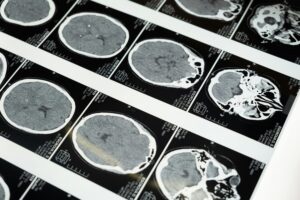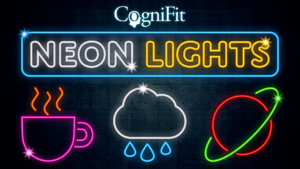
Study: Sunlight, Daylength, and Activity Patterns Influence Depression Symptoms
A groundbreaking study has uncovered the intricate connection between sunlight exposure, physical activity, and mood disorders such as depression and bipolar disorder. By analyzing movement data from wrist-based sensors, researchers demonstrated that sunlight intensity and daylength influence physical activity, with implications for seasonal patterns in mood disorders. This innovative approach could pave the way for digital tools to predict and manage mood disturbances more effectively.

The Study: Exploring Seasonality in Mood Disorders
Who Conducted the Research?
The study was conducted by Oleg Kovtun and Sandra Rosenthal from Vanderbilt University, U.S., in collaboration with the University of Bergen, Norway. The findings were published in September 2024 in the open-access journal PLOS Mental Health. The team brought together expertise in neuroscience, psychiatry, and environmental science to address critical gaps in understanding seasonal mood disorders.
Study Participants and Methodology
As Science Daily reports, researchers recruited 55 participants for the study: 23 individuals with diagnosed major depressive disorder or bipolar disorder and 32 without any depressive conditions. The participants, residing in Norway, were chosen due to the region’s dramatic seasonal shifts in sunlight and daylength, making it an ideal setting for investigating the impact of environmental factors on mood and activity patterns.
Participants wore wrist-based accelerometers for two weeks. These devices recorded motor activity continuously, providing an objective measure of physical activity levels. Alongside this data, researchers analyzed sunlight exposure using NASA-collected solar insolation data (measuring sunlight intensity) and photoperiod data (daylength). This combination of real-world data and advanced digital tools allowed the researchers to explore how sunlight exposure affects physical activity and mood states in individuals with and without mood disorders.
Key Focus of the Study
Mood disorders such as major depressive disorder and bipolar disorder are the leading cause of disability worldwide, affecting millions of individuals. Up to 30% of those affected experience seasonal patterns in their symptoms, characterized by shifts in energy levels, sleep patterns, and overall mood. However, the underlying mechanisms driving these seasonal patterns have remained poorly understood. This study aimed to investigate the relationship between sunlight exposure, physical activity, and mood states, with a particular focus on individuals susceptible to seasonal mood variations.
What Sets This Study Apart?
A Quantitative, Data-Driven Approach
Unlike traditional studies that rely heavily on self-reported symptoms, this research leveraged objective data collected through wearable devices. By combining accelerometer-measured physical activity levels with precise environmental metrics, the study provides a robust, data-driven understanding of how sunlight and daylength influence mood and activity patterns.
Focus on Seasonal Triggers
While many studies have explored the impact of sunlight on mood, few have directly examined the interplay between sunlight exposure, physical activity, and mood in a seasonal context. This research highlights the complex interactions between environmental factors and physiological responses in both depressed and non-depressed individuals, offering new insights into the triggers of seasonal mood disturbances.
Generalizable Digital Tools
One of the study’s most significant contributions is the development of a framework for using digital biomarkers to monitor and predict mood disturbances. By incorporating accelerometer data and environmental metrics, this approach has the potential to revolutionize mental health diagnostics and interventions.
Key Findings of the Study
- Depressed States Are Linked to Reduced Physical Activity. Participants with mood disorders exhibited significantly lower levels of physical activity during depressed states. This aligns with clinical observations of lethargy and reduced motivation as hallmark symptoms of depression.
- Sunlight Exposure Boosts Activity Across All Groups. Daylength (photoperiod) and sunlight intensity (solar insolation) were positively correlated with physical activity levels in all participants, regardless of mood state. However, the boost in activity was less pronounced in individuals with mood disorders, indicating a potential physiological disconnect.
- Weakened Sunlight-Activity Link in Depressed Individuals. Depressed individuals displayed a weaker link between sunlight exposure and activity levels. This suggests an altered physiological mechanism that impairs their ability to respond to environmental energy inputs, such as sunlight, in the same way as individuals without depression.
- Sedentary Behavior Limits Sunlight Benefits. Individuals with mood disorders were more likely to engage in sedentary behaviors, reducing their time spent outdoors. This limited exposure to sunlight may exacerbate depressive symptoms, creating a cycle of inactivity and mood deterioration. Encouraging outdoor activities could help break this cycle.
- Potential for Early Warning Systems. The study highlighted the potential of accelerometer-based digital biomarkers to act as early warning systems for mood disturbances. These tools could provide clinicians with real-time data on changes in physical activity and sunlight exposure, enabling timely interventions tailored to individuals’ needs.
Extending to Cognitive Abilities
The study also highlights a potential link between seasonal mood variations and cognitive skills. Reduced physical activity and time spent outdoors may negatively impact memory, attention, and decision-making, particularly in individuals with depressive disorders. Conversely, sunlight exposure has been associated with improved cognitive function through increased vitamin D synthesis and activation of neural networks. Integrating these factors into future research could provide comprehensive strategies to support both cognitive and emotional well-being.
Implications for Science, Medicine, and Society
Scientific Advancements
This study represents a significant step forward in understanding the environmental triggers of seasonal mood disorders. By integrating real-world data on sunlight exposure and physical activity, it bridges the gap between environmental science and mental health research. The findings open the door to future studies exploring the physiological mechanisms underlying these relationships, paving the way for new therapeutic approaches.
Medical Implications
The research underscores the importance of sunlight exposure and physical activity in managing mood disorders. For clinicians, these findings highlight the potential for wearable devices and digital biomarkers to enhance mental health care by providing personalized, data-driven diagnostics and treatment plans. Incorporating sunlight exposure and physical activity into therapeutic strategies could improve outcomes for individuals with seasonal mood disturbances.
Educational and Workplace Applications
The findings have broader implications for educational and workplace environments. Encouraging outdoor activities and exposure to natural light could benefit students and employees by enhancing mood, productivity, and overall well-being. Schools and organizations can use these insights to create schedules that balance indoor tasks with outdoor breaks, promoting mental health in structured settings.
Broader Societal Impact
On a societal level, this study highlights the potential for accessible digital tools to empower individuals with mood disorders. By providing real-time feedback on physical activity and sunlight exposure, these tools could help users identify and manage seasonal symptoms more effectively. Promoting the benefits of outdoor activities and sunlight exposure could also improve public mental health on a larger scale.
Conclusion
This innovative study shines a light on the complex interplay between sunlight, physical activity, and mood disorders, emphasizing the importance of environmental factors in mental health. By leveraging digital biomarkers and open-source tools, researchers have provided a blueprint for predictive diagnostics and personalized care.
As lead authors Kovtun and Rosenthal explained, “Individuals with seasonal mood disorders may not yet recognize the pattern of their illness. One of the goals of our study is to motivate the development of digital tools to assist clinicians and help affected individuals with self-management of their symptoms.”
With its emphasis on data-driven solutions, this research offers hope for more effective interventions and a brighter future for those affected by seasonal mood disorders. By integrating wearable technology, sunlight exposure metrics, and physical activity monitoring, the study lays the foundation for next-generation mental health care.





































